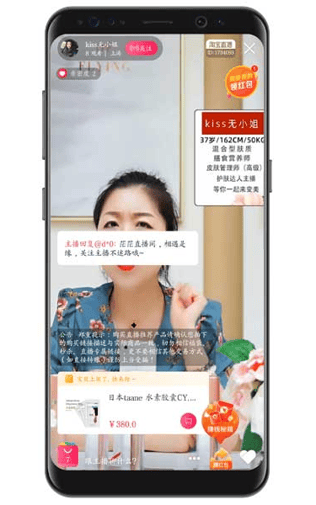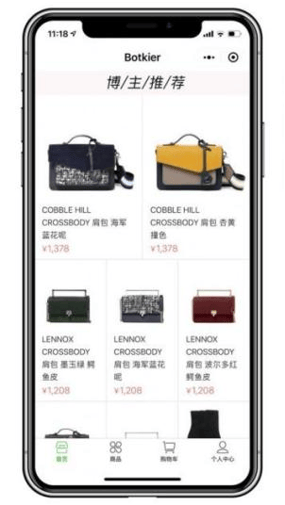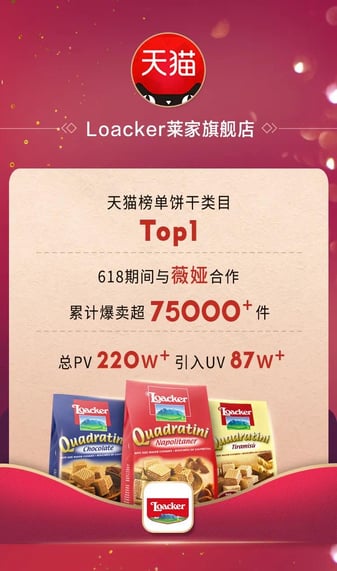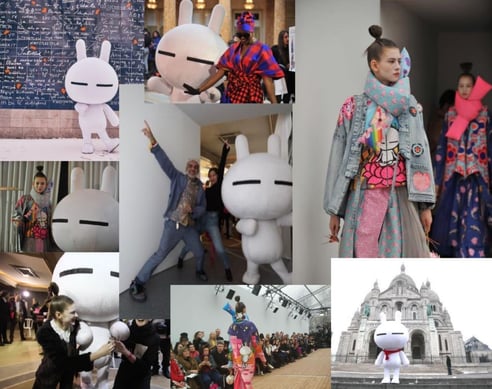How to bring your brand online in China
A lot of foreign brands arrived in China at the very beginning when China opened its borders. Nowadays these businesses are surviving. Chinese people are used to see them but probably never bought them. Is it because the products are bad? No, it’s simply because they are completely absent on online platforms (no digital footprint), and people need to regularly see your products to remember them and to be tempted to buy them.

E-commerce sales in China are on way to surpass expectations as they already reached $1.8 trillion in 2020. With the rise of social commerce – purchases made via social media, social media have become an ideal place to share, comment and sell products. Social commerce is the online overlap of shopping and community. It often takes the form of commerce-based interactions on social media platforms, or group experiences on e-commerce websites. Because users are simply spending more time with digital media platforms, social commerce is now a huge industry in China, with sales projected to reach $363 billion in 2021.
In this article we will explore the influencers to be used in social commerce, the elements to be taken into consideration to make a sound plan, as well as the dos and donts in content localization.


Picture from: https://ecommercechinaagency.com/great-chinese-online-marketplaces-for-e-commerce/
Influencers are the way to go for digital marketing in China
KOLs are important to win consumer trust, including cultural icons and other social influencers. Brands who use social media influencers are reporting much higher conversion rates than through traditional advertising models.
For example, the strategy of Givenchy in China is to use Li Yuchun, who became famous when she won “Supergirls”, a singing competition, through popular voting. The singer also stood out as she did not conform to the usual standards of beauty. She dressed very simply and had an aggressive voice. She quickly became a new symbol for Chinese netizens and has reached 3.6 million followers with an engagement of more than 20,000 with each of her social media posts.
Cultural icons have long been used in traditional marketing and their appeal is easily transferred to the digital world. Nowadays a new group of top influencers unique to digital marketing have emerged, the live streamers who generate sales directly while providing a special kind of entertainment for the buyers. This forms a key part of social commerce today. It is more cost effective and used by a wider spectrum of consumer brands.
Viya, the top live streamer on Taobao for example, livestreamed to over hundreds of millions of viewers during the annual two-day Singles’ Day shopping event last year. Her audience spent over 4.8 billion yuan ($719 million) on products she promoted. And Viya was just one of many – that day, over 66,000 live streamers across different Chinese platforms attracted a total of 709 million viewers.
Duhno arranged a cooperation between Loacker and Viya during the 618 festival, one of the several key shopping festivals on e-commerce platforms. Over 75,000 packs of the best-selling product in the cookies category were sold overnight. Overall, we use KOL activation to fill the need for reassurance and relatability that customers look for when discovering a product. Then for a specific campaign, Duhno will pick KOLs who are familiar with the type of products or brand we represent, who have proven successful past marketing efforts and who match the target audience.


Going online should be done with a plan
Successful online debuts depend on the combination of e-commence and social media strategies. It is crucial to choose the right e-commerce platform to display and sell the products as well as the right social media channels to attract attention and drive traffic to your e-commerce stores through content marketing.
Over the past 10 years, many eCommerce platforms have developed, improved to adapt to the demanding and ever-changing needs of Chinese consumers. E-commerce sales is driven largely by sales from leader Alibaba’s Taobao and Tmall. Companies that want to promote their brand cannot overlook Tmall. To apply for a Tmall shop there are stricter rules: you need to prove that you are the brand owner/official distributor in order to legitimize your right to sell in China. This difference (compared to some other platforms) bring trust to Chinese consumers. But Alibaba’s share is shrinking as the market diversifies with the emergence of retailers and newcomer Pinduoduo’ and Xiaohongshu’s recent success.
As for social media platforms, again a wide range of them should be taking into consideration, including Wechat, the most popular multi-purpose APP in China, live streaming across different e-commerce platforms as well as Douyin, the short video APP with hundreds of millions of active users in China on a daily basis, etc.
Duhno supported Loacker to conduct social listening and spotted competitors that operate with similar campaign budget. Based on analyses of competitors and a broader food marketplace, we created a full digital eco-system strategy for Loacker, including social media content creation, collaboration with KOLs as well as on-line to off-line events.
Having a digital marketing plan also requires consistency among different teams within a company to better serve the external audience. One of our clients, a leading game brand, had trouble with their tagging system, which is crucial to social customers relation management. We found out that the Chinese local team had their own tagging system and names, and the Global team had their own tagging names as well. We ran a series of workshops to improve coherence between them. The local team had tags to serve the marketing in China, while the Global team had a much broader tagging system. We shrank everything and came out with a new tagging plan: each time the local department had a new project we would put some tags and see if there were any matches with the global one. And according to these matches we would know what to communicate to the right target audience.
Localization and building asset
For long term sales generation in China, it is crucial to build brand assets and not just visibility or traffic. Many international brands try hard to connect with Chinese consumers through localization. However, some of them make simple adaptations of their campaigns at home, which do not go down well with Chinese consumers, or even ridiculed Chinese consumers with their unique sense of humor. The brand that did both was D&G.
Titled “DG Loves China,” fashion brand Dolce & Gabbana’s 2017 campaign models were shot interacting with locals on the streets of different countries. The images were fun-filled and well received in countries like Japan, but it was viewed with mixed emotions in China. Though middle or upper middle class people wearing luxury brands can often walk next to working class on streets in big cities, some thought the images were trying to make China look bad.
Ignoring consumer feelings, in 2018 again a controversial video by D&G showed a Chinese woman struggling to eat Italian food. She wears a sparkly red Western-style dress, but is too provincial to understand European culture. The voice-over starts by mocking of the wrong pronunciation of the brand name, “dols” instead of “dolchei”, which was actually quite funny. The failure is that the voice-over talks to the Chinese audience as a foreigner or to be more specific, an Italian, in a rather contemptuous way. “Margheritta pizza” is “our great Margheritta pizza”, which is totally fine if you are not making it the biggest challenge on a dinner table a Chinese woman can ever have in her life. It is even worse when the video shows the woman having difficulty eating Cannolo siciliano with chopsticks, it goes: “Is this too big for you (plural form in Chinese)?” If it had been the singular form of you, which is “ni” in Chinese, it would have been referring to this girl only, which may not be that offensive. But the you in plural form, which is “nimen” in Chinese is referring to all Chinese or oriental consumers, which is absolutely rude, especially to many target consumers, who are accustomed to western dishes. If an Italian can speak Chinese so well, why does he know so little about the Chinese? If this is just dubbed in Chinese, it only shows how ignorant an Italian can be.It was unthinkable the script was written by a Chinese copywriter or any Chinese copywriter was even consulted for the script. It seemed they hired a translator or used google translation only to embarrass themselves.
In addition to avoid hurting consumer feelings, it is also important to notice the revival of traditional culture in China. Digging into their culture and heritage has become a very popular way for China’s younger generation to explore their own identities. The country’s long and complex history offers discoveries that go well beyond state-sanctioned national pride. At Duhno, we systematically adapt the brand to the local market, we do all our campaigns according to the Chinese Calendar. Take Loacker for example, Duhno leveraged the power of comics to tell the story of Loacker and developed e-greetings featuring Gnometti, the character from the comics, for traditional festivals in China.




In spite of intensifying nationalistic consumer activism, western culture remains attractive to the vast majority of Chinese consumers. European flair can be a key part of “localization” in China. In 2018 Duhno developed Tuzki universe for IP licensing .We helped to connect a famous fashion designer Manish Arora with Tuzki. The designer then used Tuzki for his new season clothing at a fashion week in Paris and we arranged the agenda of the event and live streamed it. Paris is not only a popular travel destination but also regarded as one of the most stylish cities in the world among the Chinese. Tuzki got over 12 times more impression and 8 times more engagement during the fashion week compared to regular weeks.

Achieving 10 million Euros from Chinese consumers
Globally mid-size companies need more agencies that are supporting brands to become strong. Duhno is a leading digital agency with multiple offices across China. We work with food & beverage goods and licensing brands to raise their China businesses to 10 million Euros turnover and beyond.
In recent studies 60% of European SEMs are considering China as an export goal for the coming 5 years. So, at Duhno Marketing we believe that there will be a consistent flow of brands willing to enter China and at a given moment of their growth they will need support on the ground before they setup their own team.
We provide vision & innovation, digital asset management and visibility & traffic. This articulates into strategic thinking and planning to decide the best way to put the brand in the spotlight and drive traffic to it, so that our client can achieve its goal in China.
We are your “digital last mile” to access Chinese consumers. We provide you a local marketing team that includes a marketing project manager and a content manager, a copywriter as well as designers, illustrators, community managers, traffic managers, etc.
Did you check out or white paper about the right E-commerce strategy for Chinese Market ?
References:
- Digital Marketing in China in 2020: Best Ways to Enter the Chinese Market (nealschaffer.com)
- Lessons from China on future of social commerce and content | World Economic Forum (weforum.org)
- Chinese eCommerce platforms in 2021: Which is the most suitable for your brand? - Ecommerce China (ecommercechinaagency.com)
- Dolce And Gabbana comes under fire for its 'DG Loves China' ad campaign (snobette.com)
- Dolce & Gabbana's Chinese ad illustrates the racism of fashion (fastcompany.com)
- Opinion: Heritage has Become Hip With Chinese Millennials | Jing Daily
- https://www.emarketer.com/content/us-social-commerce-following-chinas-footsteps
